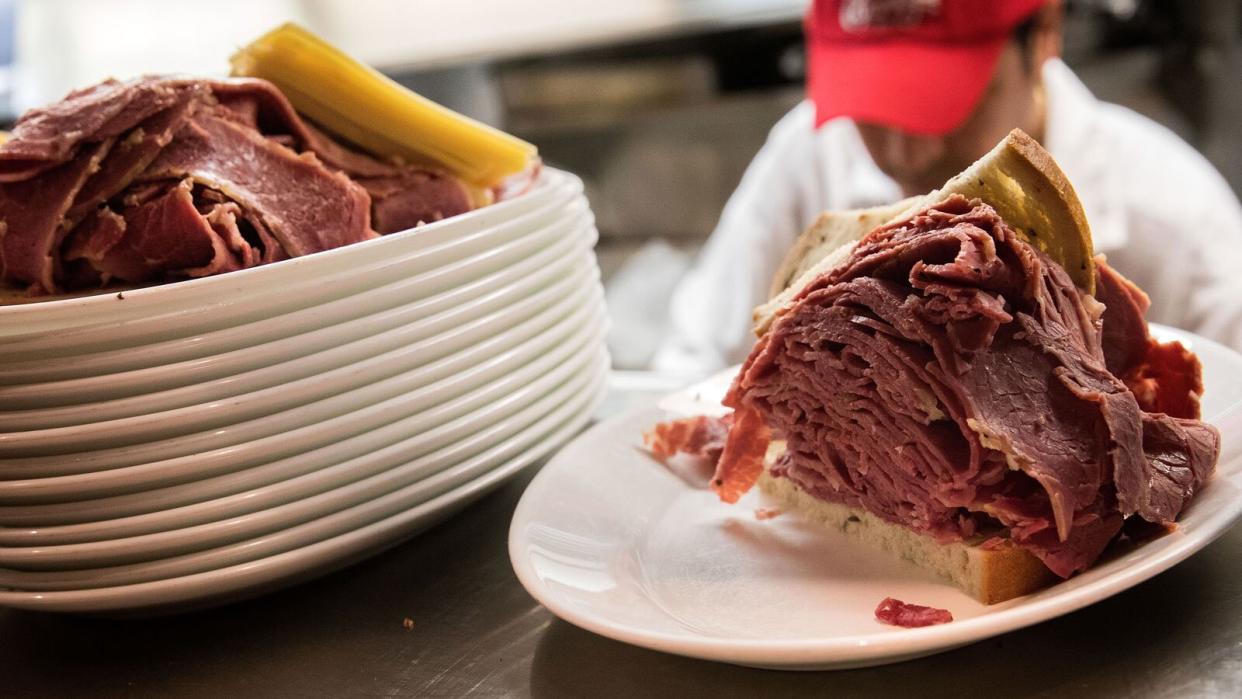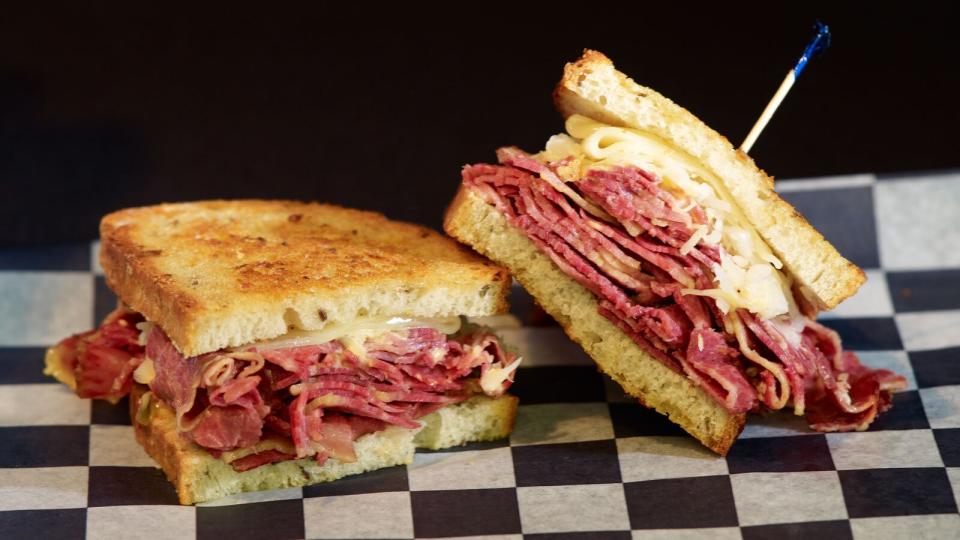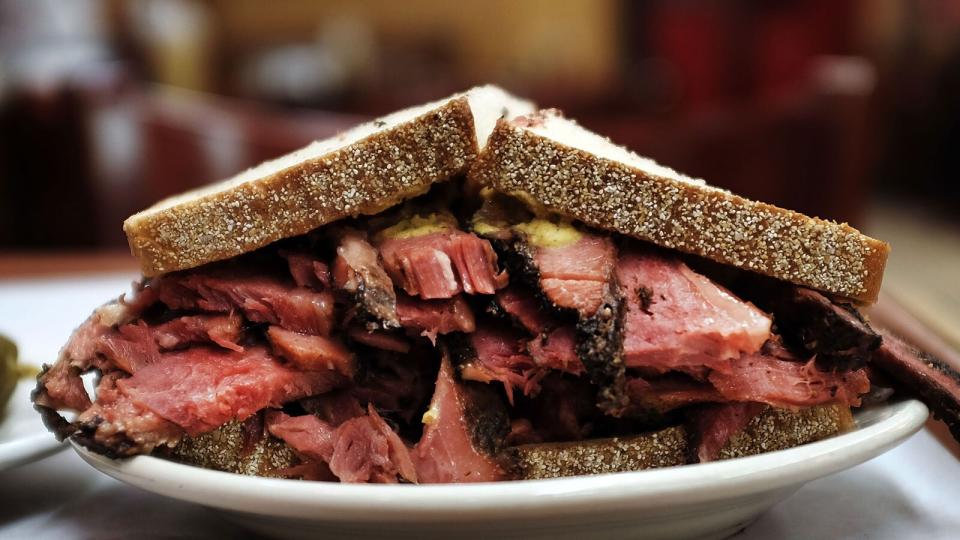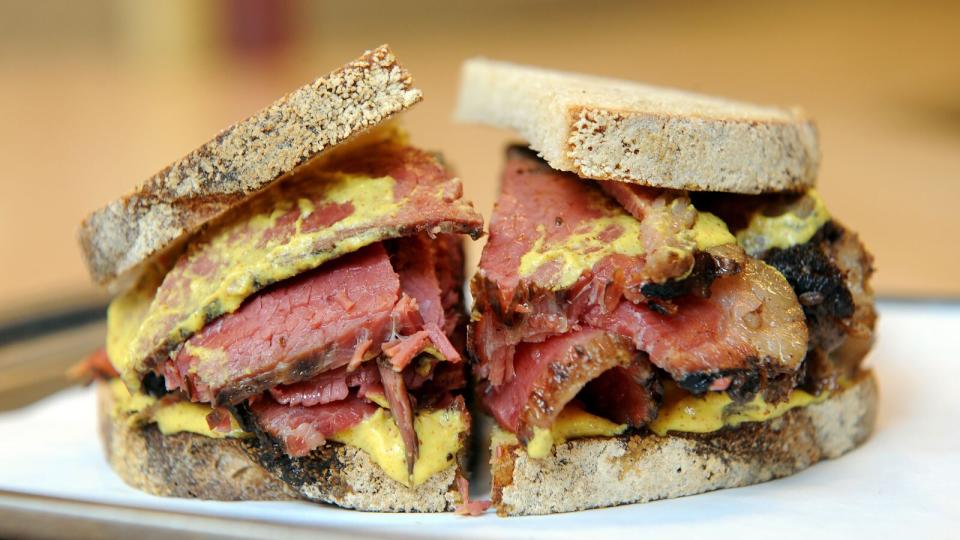Corned Beef, Pastrami, and Montreal Smoked Meat: Do You Know the Difference?

Photo by Drew Angerer/Getty Images
There might be no finer sandwich meat in the world than beef that has been brined, seasoned, smoked, and steamed. These deep pink slices of salty perfection can be piled on rye, slathered with spicy mustard, or anointed with Russian dressing, Swiss cheese and sauerkraut. When seeking out such a delicacy, your choices are often corned beef or pastrami. If you are very lucky, you might also have a Montreal style smoked meat option. But what is the difference — if any — between corned beef, pastrami and Montreal smoked meat?
Origins
Corned beef, pastrami and Montreal smoked meat, despite their similarities, hail from very different parts of the world. Corned beef comes from Ireland, where salted beef was made as far back as the 12th century. In the 17th century, when the British stopped importing cattle from Ireland, it was necessary to up the amount of beef they were eating, so the Irish leaned into the method of preserving using large salt crystals that looked like kernels of corn, hence the origins of the name. Pastrami is thought to have originated in either Romania or Turkey, with meats that were brined and dried and then rubbed with spices. Smoking was added along the way as an added method of preservation. Montreal smoked meat, naturally, traces its origins to Montreal via Eastern European Jewish immigrants.
RELATED: How to Make Ultra-Tender Corned Beef
Corned Beef

Courtesy of Brent Bingham/Getty Images
Corned beef is made from beef brisket that has been salt-cured, usually in a brine that contains sugar, saltpeter, or sodium nitrite which retains the pink color, and other seasonings like black pepper, bay leaves, coriander, and cloves. After it is fully cured it is boiled to cook through. When served cold, it is sliced as-is, but for hot sandwiches, the whole briskets are then usually steamed to heat through and keep warm before slicing. For entrees, the corned beef is boiled again, usually with carrots, cabbage, and potatoes.
Pastrami

Photo by Spencer Platt/Getty Images
Pastrami is usually made from either the navel or beef deckle, which are different cuts from brisket, and tend to be smaller and more marbled. The brining method is the same as for corned beef. After curing, the meat is coated in a thick spice rub that contains seasonings like mustard seed, garlic, black pepper, fennel seed, and coriander. This rub is left on the meat while it gets steam smoked, usually over hardwood with a pan of water or other liquid present in the smoker to create a moist environment that prevents the meat from developing a hard outer crust or "bark" the way you find in more traditional smoked meats. Once smoked, pastrami is steamed, which retains both the texture and keeps the spice coating intact.
RELATED: Neal's Deli Smoky Pastrami
Montreal Smoked Meat

Courtesy of Susan Watts/NY Daily News via Getty Images
Leave it to the geniuses north of the border to get inspired by these two great meats and meld them into one fabulous dish. Montreal smoked meat is made with brisket, like corned beef, and with a similar brine to both corned beef and pastrami, but with little or no sugar in the mix. Then it gets smoked, like pastrami, but without the spice coating, like corned beef. It is also often smoked a little bit longer than traditional pastrami, and it is this more pronounced smoke flavor which is likely why it is referred to as "smoked meat." Like corned beef, smoked meat can be served cold, warmed through for hot sandwiches, or steamed to serve as an entrée.

